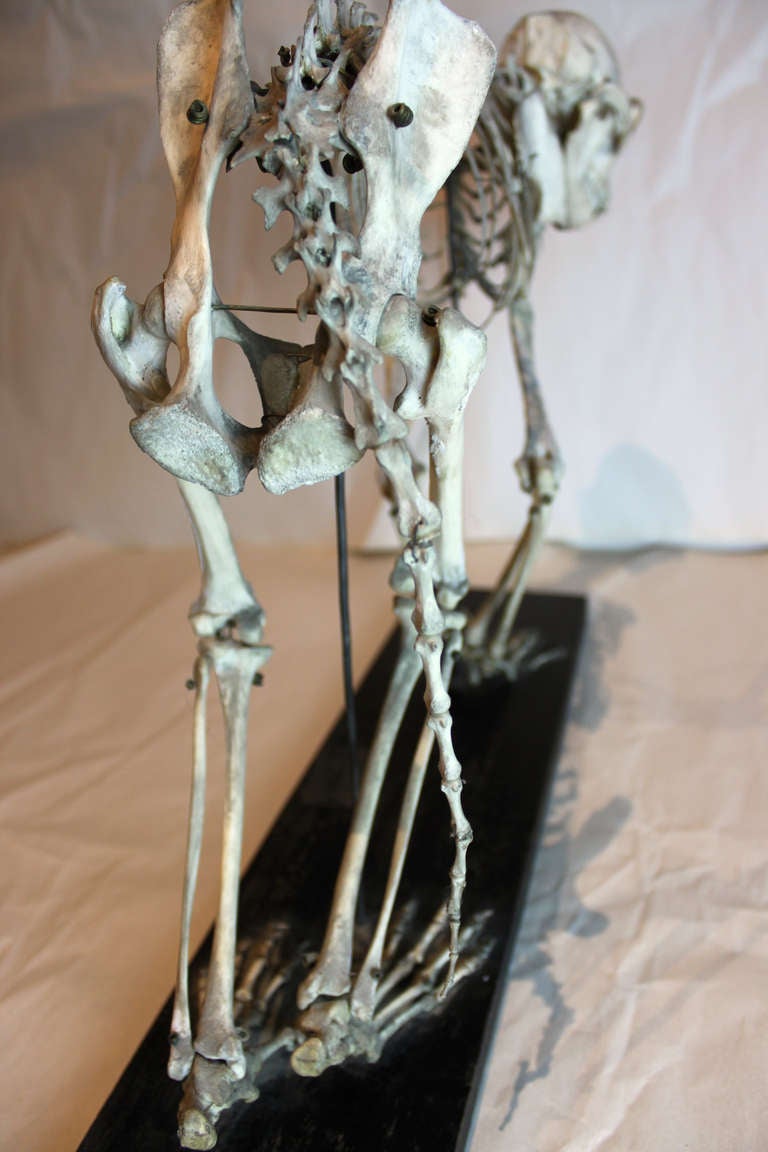
Four orthograde genera, however, do not follow this rule, as they have shorter hands than expected for their body weight: in Gorilla (G), this is attributable to the great body weight and the primarily terrestrial quadrupedal locomotion ( 22) whereas in Homo (H) it is attributable to the shift from a mainly locomotor to a more manipulative use of the hands. Both Miocene hominoids that yielded hand remains show the expected proportions: the pronograde Proconsul (P) has relatively short hands whereas the orthograde Dryopithecus (D) has long hands, as in extant apes. Hands of orthograde anthropoids (apes) are considerably longer than those of pronograde anthropoids because a large friction surface is needed to secure a firm hold during vertical climbing and hanging from branches. ( a) Relation between hand length (carpals, metacarpals, and phalanges of the third digit) and body weight in anthropoid primates (log10 body mass, refs. In an allometric context, its hand length falls close to that of pronograde monkeys, gorillas, and hominids and not, as expected, to that of apes.įigure 1 Size and proportions of the Oreopithecus hand. 1 a, based on the skeleton IGF 11778, which has a nearly complete hand and body weight estimations for this skeleton of refs. Contrary to previous suggestions ( 13), the orthograde Oreopithecus has short hands relative to its estimated body weight (Fig.

Although Proconsul falls within the allometric trend of pronograde monkeys, the orthograde Dryopithecus fits the proportions of extant apes. This is attributable to their climbing and suspensory behaviors that require a secure handhold. 1 a) or in relation to humerus length (Fig. In comparison to the pronograde monkeys, all apes with the exception of Gorilla have elongated hands relative to their body weight (Fig. The Basel collection includes, in addition to many isolated specimens, several partial hands (BA#151 BA#89 BA#200 BA#85) and a nearly complete right hand ( 11) (Ba#140).Īn essential characteristic of the locomotor and postural mechanism of primates is hand length ( 12). Our study is based on the largely unpublished Basel collection and the recently restored left hand of the skeleton IGF 11778 from Florence, Italy. This calls for a reconsideration of the hand function of Oreopithecus. However, a revision of the large and almost unpublished collection of Oreopithecus hand specimens not only uncovered ape-like features (e.g., strong flexor insertions in the phalanges, deep insertion notches for ligaments between carpals and between metacarpals), but brought to light a combination of unexpected features indicative of improved manipulative skills hitherto thought to be characteristic of early hominids only.

The hand of Oreopithecus has never been studied in detail and is considered as morphologically similar to the hand of climbing and suspensory apes ( 10). It is considered to be closely related to the European late Miocene genus Dryopithecus ( 8, 9). bambolii (Tuscany, Italy) is a late Miocene hominoid (8 million years ago) of modern aspect, with an orthograde body structure comparable to that of extant apes and humans ( 4– 7). Hand bones of the fossil Miocene ape Oreopithecus bambolii now provide evidence that the “acme of precision” ( 1) evolved independently from the hominid lineage and as much as 5 million years before ( 2). In the fossil record, anatomical features indicative of human-like precision grip § capabilities are known from bipedal hominids only and are not documented before 3.5 million years ago ( Australopithecus afarensis). This ability is considered to be an important ingredient in the hominid hand/brain/tool complex ( 4) and is not expected to be found in nonhominid primates. However, tests of primate grasping behavior and manipulatory skills demonstrate that only humans are able to apply the considerable force ( 2, 3) necessary for holding objects securely and steadily between the pads of the thumb and one or more fingers ( 3). Within nonhuman primates, great apes and cercopithecine monkeys are known to perform a variety of precise gripping techniques, including the classical “precision grip” that involves the thumb tip and one or more finger tips ( 1).


 0 kommentar(er)
0 kommentar(er)
